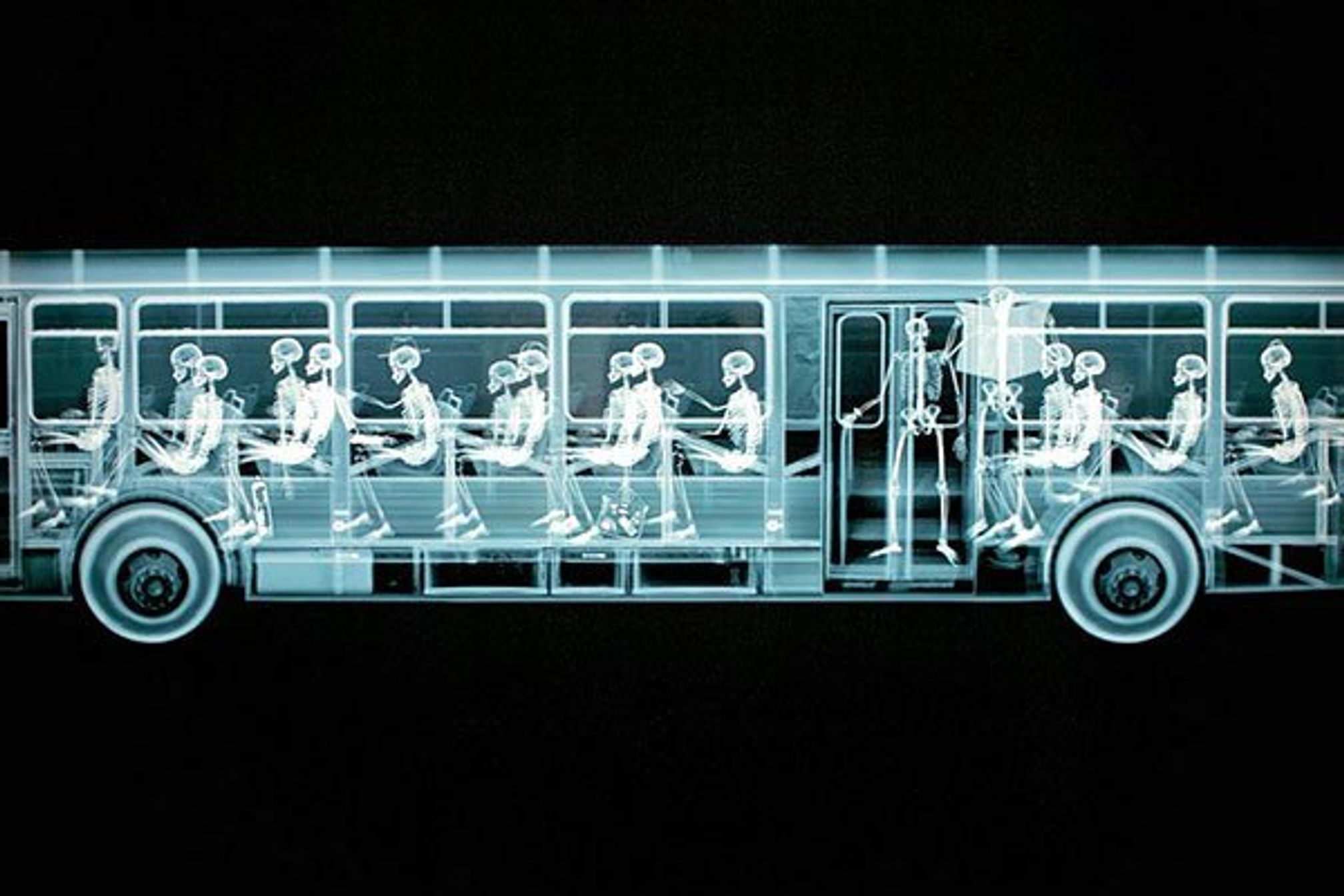At Adeptia, integration is our mantra — and not just data. We’re interested in all the fascinating and complementary intersections life has to offer. Integration as a concept means committing to harmonies in all disciplines and crafts, and we believe it is crucial to be open to unexpected combinations that can surprise, delight, and improve our industries and our lives.
Unexpectedly good integrations can happen in the art world as well. Take, for example, British artists Nick Veasey and Marilene Oliver, who have chosen to integrate art and medical technology to create astounding perspectives on what’s literally going on under our skin.
Veasey’s X-ray “DJ,” for example, looks like something between a prototype for a Grateful Dead album cover and a diagnostic image of someone who forgot to remove his or her headset and microphone before the X-ray was taken. And his “Superman” image suggests that the man of steel may really be just flesh and bones. Veasey uses X-ray technology to reveal life from the inside out. By probing below the surface, he offers powerful insights into what holds life together.
Another remarkable perspective created by Veassey is a side view of a bus, seen with x-ray vision (pictured above). By literally stripping away the outer layers of his subjects, his work shows how fundamentally similar humans are to one another. But, at the same time, Veassey leaves hints of individual spirit at work — from the cowboy hat on one skeleton to the headphones on another.
“I like to counter this obsession with superficial appearance by using x-rays to strip back the layers and show what it is like under the surface,” says Veasey. “I like to challenge this automatic way that we react to just physical appearance by highlighting the, often surprising, inner beauty.”
Veasey finds irony in the fact that he uses technology often associated with commercial and military applications to reflect on the inner spirit of both animate and inanimate objects. “To create art with equipment and technology designed to help big brother delve deeper, to use some of that fancy complicated gadgetry that helps remove the freedom and individuality in our lives, to use that apparatus to create beauty brings a smile to my face,” he says.
“While we all look different on the outside, we look much alike on the inside,” observes Laura Thompson, director of education at MASS MoCA in North Adams, Mass. Oliver and Veasey recently collaborated on a two-person installation at the innovative arts center in the Berkshire Mountains.
In her work, Oliver mirrors mind, body and spirit by integrating medical scans and traditional art forms, such as weaving and woodcarving, into transparent, three-dimensional sculptures. Oliver uses CT scans (computed tomography) and MRIs (magnetic resonance imaging) to blend images of organs, flesh and skin that simultaneously reflect the uniqueness of the individual and the sameness of the species.
Her “Mum and Dad” sculpture, now part of the Knoxville Museum of Art’s permanent collection, somehow captures the essence of being human, while using art to express the human life form in a surreal expression of being. A similar sculpture, called “Dervishes” was part of the exhibit at MASS MoCA.
“At first my work attempted to repair the fragmentation and dislocation brought about by medical imaging, and to reclaim the body from the contemporary medical and digital gaze in order to poetically subvert it and offer future relics of our digitized selves,” explains Oliver.
Over the past decade, Oliver has been using an anonymized dataset called “Melanix” to help shape her work. “I made a conscious decision to employ embodied techniques such as weaving, beading and cutting with the intention of ’embodying’ the materializations of Melanix,” she says.
“If we could download our consciousness into a computer, what would become of our bodies?” asks Oliver. She suggests answers to that question by using art to delve into the twilight zone between reflected reality and real life.
Greg Sandler, a B2B content development expert and freelance writer, has worked on a wide range of business integration and web development projects. He also has written for hundreds of publications, organizations, government agencies, and private sector clients. In addition to editorial experience, Greg has extensive copywriting and scriptwriting experience. He also has both print and online custom publishing and advertorial experience. Check out his profile on LinkedIn or send him an e-mail.
For more articles in this series, check out:





